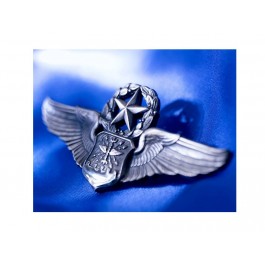|
|
Flight Review & FAA WingsDescriptionWelcome to the Flymall flight review page. Here you will find flight review guides and other information.Completing the FAA Pilot Proficiency Program (WINGS) (One or More Phases). Under § 61.56(e), a person who has satisfactorily completed one or more phases of the FAA-sponsored WINGS within the preceding 24 calendar-months does not need to accomplish the flight review requirements of this section. AC 61-91, WINGS—Pilot Proficiency Program, describes how flight instructors should encourage pilots to participate in WINGS. To complete each Phase, you must earn 6 credits consisting of 3 Knowledge credits (Courses, Seminars, or Activities) and 3 Flight credits. The primary focus of each activity determines the applicable credit. You will only get the pin the first time you earn that level. This info is found at FAASafety.gov under Pilots, then Team Rewards, then Team Member Rewards. It says "Three distinctive pins are available as appropriate to the Level of WINGS earned. The appropriate pin will be awarded the first time you earn that level." Your students can earn Wings credit for their first solo. Click here for more information. Renew your CFI by giving WINGS training. Here’s how: (1) Hold a flight instructor certificate that has not expired. (2) Hold a current phase of WINGS (at any level) at the time of application. (3) Have evaluated at least 15 WINGS-accredited flight activities (any level) during which the CFI evaluates at least five different pilots, and make appropriate endorsements in the logbook of each pilot for each activity. Here are some slides to assist you navigating the FAA WINGS page to obtain your credits and earn your FAA WINGS. You can click on a slide to open up a new window in Flickr to view the presentation in a larger format.  FLIGHT PORTION: FROM AC 61-98D Regardless of the pilot’s experience, the flight instructor should review at least those maneuvers considered critical to safe flight, such as: • Takeoffs; • Stabilized approaches to landings; • Slow flight; • Stall recognition, stalls, and stall recovery; • Spin recognition and avoidance; • Recovery from unusual attitudes; and • Operating the aircraft by sole reference to instruments under actual or simulated conditions. For the ground portion (from the Gleim FIRC), you need to cover: Cross country planning, risk management, ADM, weather planning and avoidance, airport ops, airspace, emergency procedures, GA security. For the ground portion from AC 61-98D; aircraft systems, speeds, performance, meteorological and other hazards (e.g., wind shear and wake turbulence), operations in controlled airspace, and abnormal and emergency procedures. The emphasis during this discussion should be on practical knowledge of recommended procedures and regulatory requirements. High Performance Airplane Endorsement Wings Activity - A070502-05 Complex Airplane Endorsement Wings Activity - A070502-04 ASEL - Takeoffs, Landings, and Go Arounds Wings Activity - A070405-07 Laps In The Traffic Pattern FAA Wings Activity - EducAvia-PVT-ASEL-001 Advanced Wings Flight Review - A130628-01 Instrument Proficiency Check - A080103-01 Tail-Wheel Endorsement - A070502-02 Category or Class Rating - Additional Aircraft (Pvt, Comml, ATP) - A100415-1 ASEL-Airport Operations (Pvt, Comm'l, ATP) - Activity Number:A100125-07 ASEL-Takeoffs, Landings, Go-arounds (ATP, Comm'l, Pvt) Advanced Level - Activity Number:A070405-89 Here are Harry's Wings under both the old and new program.  When a pilot satisfactorily completes a flight review or IPC, the applicant should provide, and the evaluating CFI should submit, a completed Form 8710-1 to the Airmen Certification Branch (AFS-760). The FAA does not require Form 8710-1 for a pilot’s flight review or IPC; however, the FAA strongly encourages all applicants and CFIs to follow this recommendation. Low flying is a killer. Before you even contemplate it, try this test. It may change your mind-and save your neck. 1. How much airspeed will you lose if you slam your aircraft into a 45° bank turn? 2. What rate and radius of turn will you get in a 45° bank turn? 3. How much space will you need to do a 180° turn? 4. How much more space will you need with a 20kt wind behind you half way round the turn? 5. How far away can you see a wire? 6. If you have to jerk back on the stick to miss a wire, how much space will it take to change the flight path upwards? 7. If you have to pull up quickly straight ahead, what airspeed will you have after 300ft of climb? 8. What do you do if you run a tank dry at low altitude? 9. Will your windshield withstand hitting a 3-lb gull? Do you still want to try some low flying? Tags: flightreview, flight review, BFR, bfr, low flying exam, PvtLP, InstLP, ComLP, CFILP, CFIILP, MultiLP, MEILP, SeaplaneLP, MiscLP, FAASafety.gov, FAASTeam Detailed Information
|









